This is Part 3 in the Road to Vegas series. To read the other installments, click here.
As you travel west to east across Nevada, you’ll come across one valley after another. First comes the Carson Valley, then the Smith Valley (which we talked about in Part 2), and the third valley you’ll run into is the Mason Valley. Like the Smith Valley, the Mason Valley is a rich agricultural land due to the presence of the Walker River. The river runs along the west slope of the valley, and it has been tapped to irrigate most of the valley. Here is also where the East Walker and West Walker Rivers finally meet, bringing double the water in and making the valley extra rich and fertile.
The Mason Valley was first settled in the 1850s by a rancher named Mason, and it didn’t take long for others to follow and start cultivating the valley. A small town soon formed at the center of the valley, and one of its features was a saloon with thatched walls that served a particularly nasty form of fire water. This whiskey was some of the worst to be had anywhere in the West, and the locals soon took to calling it poison. Or, as they shortened it to, “pizen”. In no time at all, the little town took on the inauspicious name of Pizen Switch, and held it for several years. But as the town grew and a better class of people settled in the valley, everyone was soon clamoring for a new name. In 1879 the community agreed to change the name of the town to Greenfield, to honor the green fields that filled the valley, and the name Pizen Switch was never to be spoken again.
Soon after that, the railroad came to the Mason Valley. It was the Carson and Colorado line, an offshoot of the Virginia and Truckee that ran from Mound House, down south through Lyon and Esmeralda counties, and eventually terminated in the Owens Valley south of Bishop. The Mason Valley was seen as little more than a speed bump along the way, though, so instead of laying the rails close to the town of Greenfield, the railroad instead stayed at the north end of the valley, only stopping once at the town of Wabuska. The residents of Greenfield didn’t take kindly to this snub, and they thought that as the heart of the Mason Valley they should have a railroad too. Or at least a branch line, running down from Wabuska south to the farms and ranches surrounding Greenfield. They petitioned Henry Yerington, who was the superintendent of both the V&T and the C&C, to get rails laid over the 12 mile route that would connect them to the main line, but he was deaf to to their pleas.
So the residents of Greenfield decided they had one weapon left in their arsenal, and that was flattery. In 1894 the community united as one and changed the name of the town once again, this time agreeing on the name Yerington. All traces of Greenfield were removed, from the post office, the hotels, the businesses, and they all were replaced with Yerington. Surely this gesture would get the attention of the man with the power over the railroad, and he’d have to build them a branch line. But, it didn’t work. Their efforts went unnoticed, or at least unappreciated enough that the rail line was never built. But the town stuck with the name of Yerington, and it’s kept it until this day.
The name change in 1894 came too late to make any difference anyway. By that time the Carson and Colorado Railroad, then only 13 years old, had fallen on hard times and was barely making any money for its owners. A few years later the line was bought by Southern Pacific, and after that Mr. Yerington no longer had the power to build a branch line even if he wanted to.
That doesn’t mean the town of Yerington never got a railroad, though. Early in the 20th century several old copper mines on the west side of the valley were reopened, and with the modern machinery available it was thought these mines could turn a pretty profit. So the branch line that the town had so desperately sought was finally built, opened in 1910 as the Nevada Copper Belt Railway. Also, around the same time Yerington won another victory, wresting the county seat of Lyon County away from the town of Dayton. Along with this change came a new court house in Yerington, and the money from the mines started a new prosperity for the whole valley.
Over the last hundred years, the Mason Valley has kept much of its rural character. Sprawling farms still stretch across the valley, and Yerington is still a fairly small town, although there have been changes. They have added a few modern supermarkets and fast food joints around town. The railroad went out of business in 1947, as it became more economical to haul stuff by truck. And the mines moved to open pit techniques to extract every bit of ore out of the ground. But Yerington, and the valley that surrounds it, is still one of the most fertile garden spots in Nevada.
Let’s see some pictures.

Some of the rich farmland in the Mason Valley.
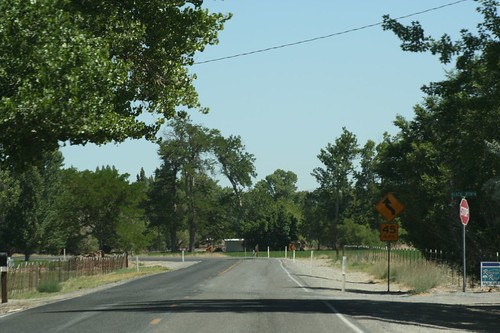
It may look like a quiet country lane, but this is actually Hwy 208, one of two main arteries through the valley.
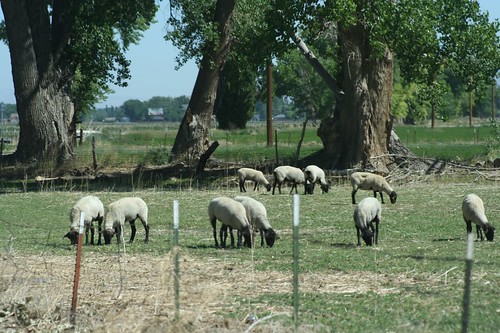
A few sheep hanging out in a field.
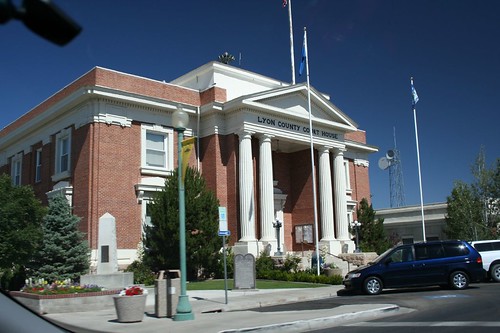
The Lyon County Courthouse, built around 1907 after the county seat moved from Dayton.
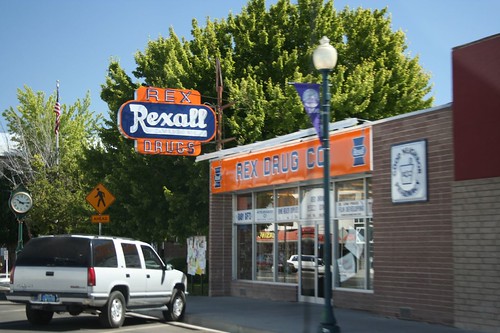
This old Rexall Drug store is still operating in downtown Yerington.
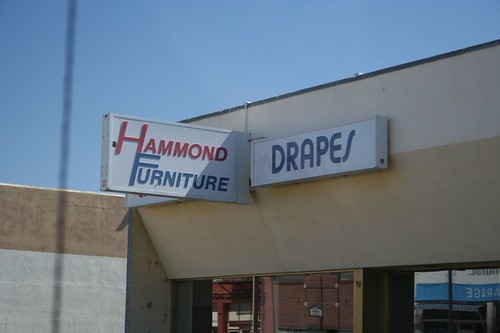
Hammond Furniture operates downtown too. I only took this picture because my wife’s maiden name is Hammond.
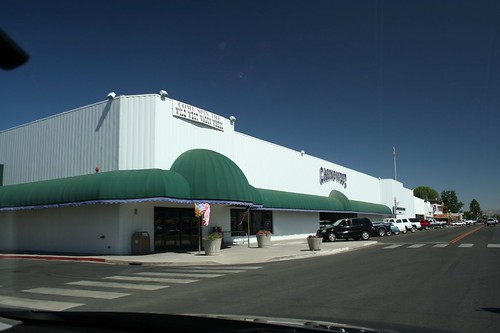
There are a couple of large casinos in the heart of Yerington. This is Casino West.
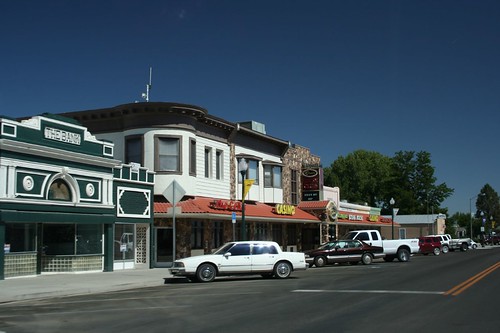
And this is Dini’s Lucky Club, still owned former Nevada State Assemblyman Joe Dini.
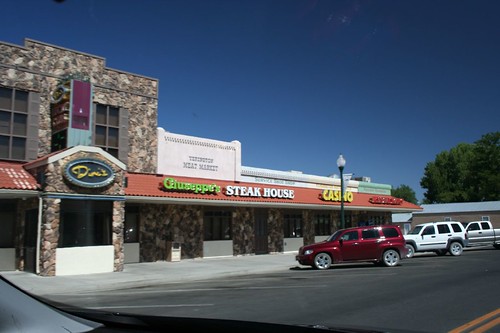
It’s also home to Giuseppe’s Steak House.
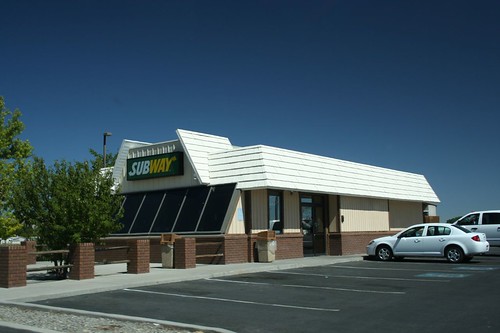
The Subway is a little outdated, but that doesn’t mean the food’s not good.
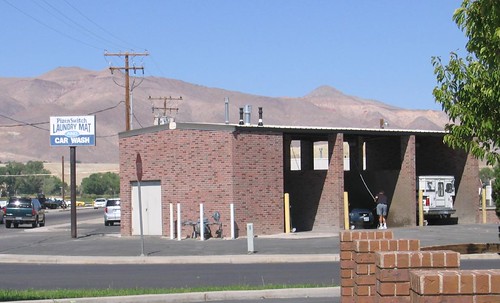
The legacy of Pizen Switch hasn’t disappeared entirely. Here you see it commemorated in the Pizen Switch Laundry Mat and Car Wash.
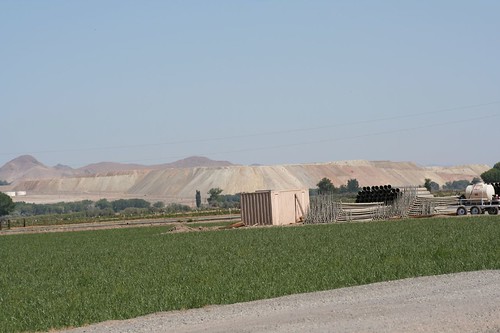
On the west side of the valley we have the Anaconda Mine. You can see the tailings piled up in the distance. This was the largest copper mining operation in the valley during the 20th century, but the techniques they used back then have left quite a mess for the current generations to clean up. It seems that the copper mining process they used left behind some byproducts you may have heard of, namely arsenic, mercury, lead, and uranium. These nasty minerals were just dumped into ponds, where they could either seep into the ground, potentially contaminating the groundwater, or dry up and blow away in a dust storm. So now the EPA is on the case, trying to figure the best way to clean the place up and decontaminate it. Meanwhile, the residents of Yerington have found themselves having to deal with an entirely new kind of “pizen”.
My brief history of Yerington and the Mason Valley was cobbled together from a few different websites. Yerington.net, Nevadaweb.com, and Masonvalleychamber.org to name a few. Many thanks to them all, and if you’re interested in learning more, go click around.
Coming up next, Part 4 takes us to Hawthorne, home of the largest ammunition dump in the world.

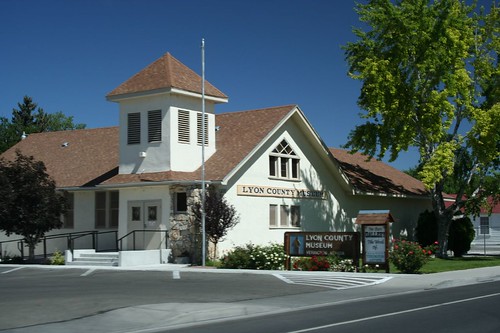
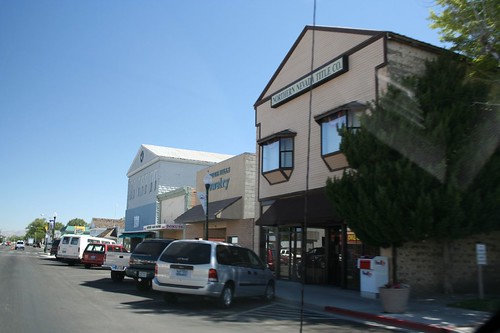

This was a great read! Thanks